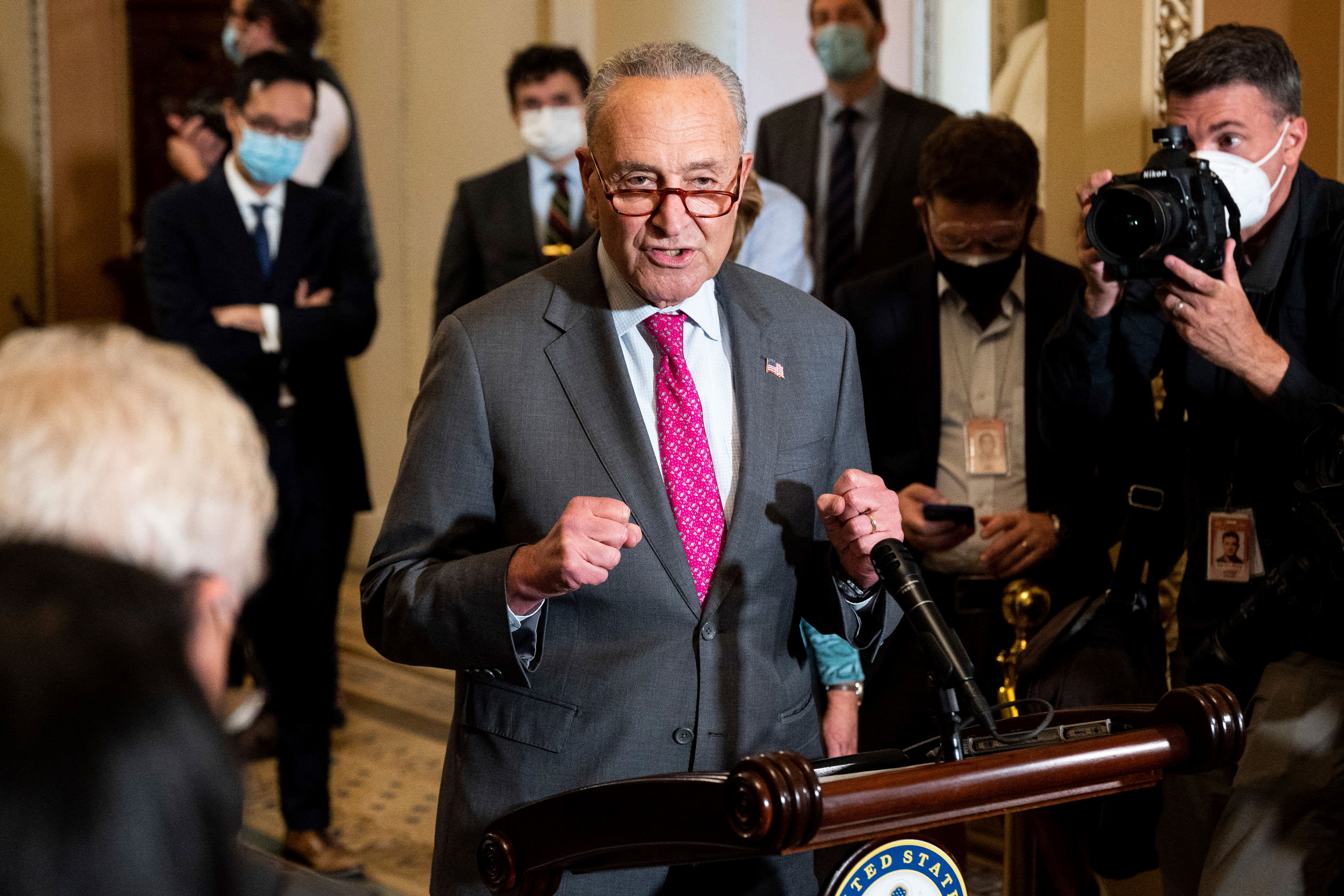Senate passes infrastructure bill and budget framework — here’s what happens next

Senate Majority Leader Chuck Schumer (D-NY) speaking at a press conference of the Democratic Senate Caucus.
Michael Brochstein | Sipa USA | Sipa via AP Images
After months of wrangling, the Senate just passed a $1 trillion bipartisan infrastructure bill and a budget resolution calling for $3.5 trillion more in spending.
The path ahead will not get any smoother for Democrats trying to shepherd President Joe Biden‘s mammoth economic plans through Congress.
“What we’re doing here is not easy,” Senate Majority Leader Chuck Schumer, D-N.Y., said early Wednesday. “Democrats have labored for months to reach this point, and there are many labors to come. But I can say with absolute certainty that it will be worth doing.”
Schumer and House Speaker Nancy Pelosi, D-Calif., have a clear checklist in front of them. The House has to pass the bipartisan infrastructure bill to send it to Biden for his signature.
Democrats’ separate plan to expand the social safety net and promote clean energy will require more steps. The House also needs to pass a budget resolution. Then congressional committees will take weeks to write a bill that both chambers of Congress can pass through the reconciliation process, which would require votes only from the 50 members of the Senate Democratic caucus.
With legislation of this magnitude, the process will likely take months — and could get derailed several times along the way.
To start, Pelosi has said she will not take up the bipartisan infrastructure bill or the final Democratic spending package until the Senate passes both of them. A spokesman for the speaker said Wednesday that her strategy has not changed after the Senate approved the infrastructure plan and the budget resolution.
Pelosi has faced pressure from some Democrats, including those in the bipartisan House Problem Solvers Caucus, to vote separately to pass the infrastructure plan. She has tied the two packages together to keep her whole caucus on board, as centrists grow wary of additional spending and progressives say the bipartisan plan is inadequate.
Barring a change in strategy, the House may not vote on final passage of either bill until well into the fall. The chamber will take its next concrete step the week of Aug. 23, when Majority Leader Steny Hoyer, D-Md., plans to vote to pass the budget resolution.
Democratic lawmakers will then turn to writing their spending bill, which is expected to include a Medicare expansion, extensions of beefed up household tax credits and universal pre-K, among a bevy of other policies. Schumer set a Sept. 15 target for Senate committees to finish writing their portions of the reconciliation legislation.
The bill could get delayed in the Senate, where any one Democrat can sink it. Centrist Democrats including Joe Manchin of West Virginia and Kyrsten Sinema of Arizona voted for the budget resolution but have signaled they will not sign off on $3.5 trillion in spending.
“Given the current state of the economic recovery, it is simply irresponsible to continue spending at levels more suited to respond to a Great Depression or Great Recession – not an economy that is on the verge of overheating,” Manchin said in a statement Wednesday.
Democratic leaders will have to craft a plan that wins over not only Manchin, but also the liberal wing of the party that could take down a bill in the House or Senate. Progressives have said the reconciliation bill needs to do more to combat climate change and buoy households than the bipartisan compromise did.
If Democrats cut too much from the $3.5 trillion package to appease centrists, they risk losing support from the other end of the party.
As they navigate intraparty disagreements, Democrats will also have to head off a barrage of GOP attacks on the reconciliation package. On Tuesday, Senate Minority Leader Mitch McConnell, R-Ky., said “this reckless taxing and spending spree is like nothing we’ve seen.”
Republicans aim to make the vote as difficult as possible for Democrats as they try to win back control of Congress in next year’s midterms. Democrats, meanwhile, want to be able to hit the campaign trail saying they helped to put more money in working families’ pockets.




